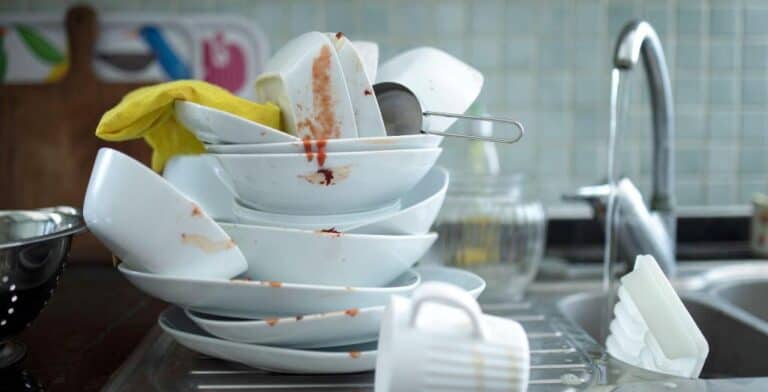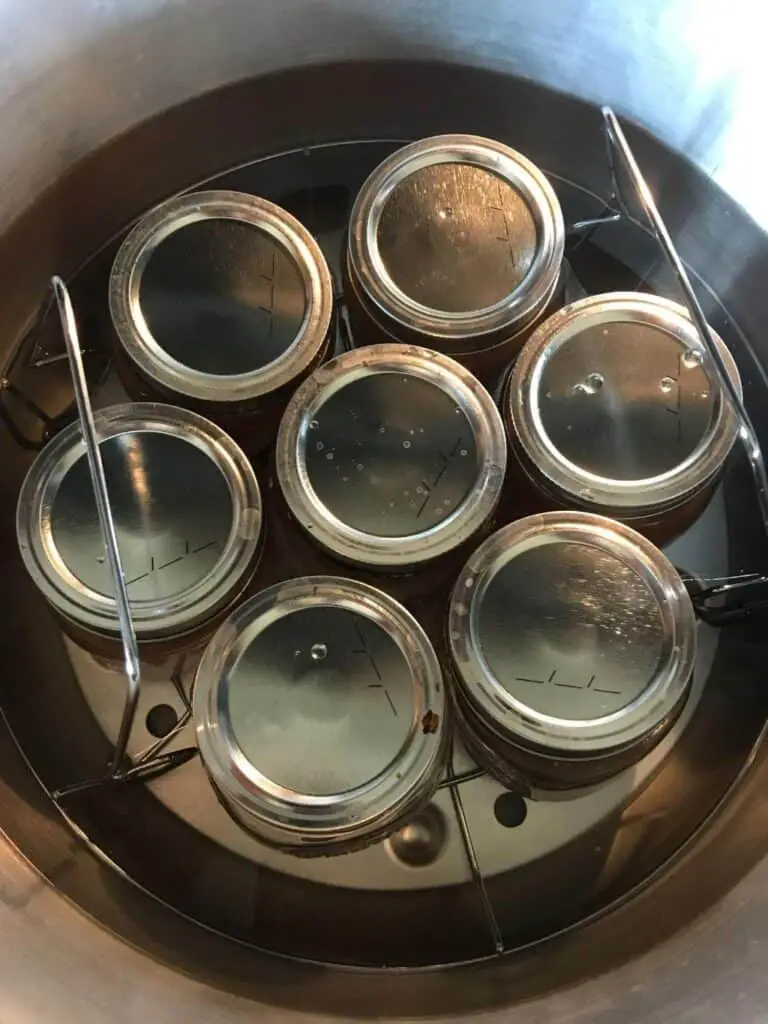Why Do Chefs Often Use Stainless Steel Pots Rather than Aluminum Pots?

When it comes to cookware, there are plenty of options on the market. However, if you’ve ever watched a professional chef at work, you may have noticed that they tend to favor stainless steel pots over aluminum ones. This may seem surprising, given that aluminum is a popular material for cookware due to its excellent heat conductivity and affordability.
So, why do chefs often opt for stainless steel pots instead? In this article, we’ll explore the reasons behind this preference and compare the pros and cons of both materials.
The Advantages of Stainless Steel Pots
Stainless steel is a popular material for cookware due to its durability, versatility, and resistance to rust and corrosion. Here are some of the advantages of using stainless steel pots:
1. Excellent Heat Distribution
While aluminum is known for its superior heat conductivity, stainless steel pots can also distribute heat evenly if they’re made with a copper or aluminum core. These metals are added to the base of the pot to improve heat transfer, resulting in a more even cooking experience.
2. Non-reactive
Stainless steel is non-reactive, which means that it won’t interact with acidic or alkaline ingredients, unlike aluminum, which can react with acidic foods like tomatoes or citrus fruits. This means that stainless steel is a safer option for cooking acidic foods and won’t affect the flavor or color of the dish.
3. Easy to Clean and Maintain
Stainless steel is easy to clean and maintain, as it doesn’t stain or corrode easily. It’s also dishwasher safe, making it a convenient choice for busy chefs who want to save time on cleaning.
4. Durable
Stainless steel is a durable material that can withstand high temperatures and heavy use without warping or scratching. This makes it a popular choice for commercial kitchens and home cooks alike, as it can last for many years with proper care.
5. Versatility
Stainless steel pots and pans are highly versatile and can be used for a wide range of cooking methods, including sautéing, frying, boiling, and braising. They are also oven-safe and can withstand high temperatures, making them suitable for baking and roasting as well.
6. Aesthetics
Stainless steel has a sleek and modern appearance that can add a touch of elegance to any kitchen. It is also easy to clean and maintain its shine, which can make it a more attractive choice for home cooks who value aesthetics.
7. Compatibility with Induction Cooktops
Another advantage of stainless steel pots and pans is that they are compatible with induction cooktops, which use an electromagnetic field to heat the cookware directly, rather than the burner. This results in faster heating times, improved energy efficiency, and more precise temperature control.
8. Safety
Stainless steel is a non-toxic and non-reactive material that is considered safe for cooking. It doesn’t release any harmful chemicals or leach into food, even when exposed to high temperatures or acidic ingredients. This makes it a popular choice among health-conscious consumers who want to avoid potential health risks associated with certain materials.
The Disadvantages of Aluminum Pots
While aluminum pots have their advantages, there are also some drawbacks to using this material for cookware. Here are some of the disadvantages of aluminum pots and pans:
1. Reactive
As mentioned earlier, aluminum is a reactive metal that can interact with acidic foods, resulting in a metallic taste and discoloration of the food. This can be a major problem for chefs who want to preserve the integrity of their ingredients and create dishes with vibrant colors and flavors.
2. Scratches and Dents
Aluminum is a soft metal that can easily scratch or dent, especially if it’s subjected to high heat or pressure. This can compromise the structural integrity of the pot and make it less effective at conducting heat evenly.
3. Non-Compatible with Induction Cooktops
Because aluminum is not magnetic, it is incompatible with induction cooktops. Induction cooktops work by generating a magnetic field that directly heats the cookware. Because aluminum is not magnetic, it cannot be used on induction cooktops.
4. Potential Health Risks
There have been concerns about the potential health risks associated with using aluminum cookware. Some studies have suggested that aluminum can leach into food during cooking, which can be harmful to human health if consumed in large amounts. While the evidence is not conclusive, this is a concern that many chefs and home cooks take seriously.
5. Environmental Impact
Another factor to consider is the environmental impact of producing and disposing of aluminum cookware. Aluminum production requires a lot of energy and resources, which can have a big impact on the environment. Furthermore, because aluminum cookware is not biodegradable, it can take hundreds of years to decompose in landfills. This can result in a buildup of waste and pollution, which is bad for the environment.
Comparing Stainless Steel and Aluminum Pots
When it comes to choosing between stainless steel and aluminum pots, there are several factors to consider. Here’s a comparison of the two materials:
| Material | Advantages | Disadvantages |
| Stainless Steel | Excellent heat distribution, non-reactive, easy to clean and maintain, durable | Not as good at conducting heat as aluminum, can be more expensive |
| Aluminum | Excellent heat conductivity, lightweight, affordable | Reactive, not as durable, potential health risks |
As you can see, both stainless steel and aluminum pots have their advantages and disadvantages. The choice ultimately comes down to personal preference and the specific needs of the
Pros and Cons of Stainless Steel Pots
Like any other material, stainless steel has its pros and cons when it comes to cooking. Here are some of the benefits and drawbacks of using stainless steel pots:
Pros:
- Durable: Stainless steel pots are incredibly durable and can last for a long time if cared for properly. They are resistant to scratches, dents, and corrosion, making them ideal for heavy use.
- Non-reactive: Stainless steel is non-reactive, meaning it doesn’t react with acidic or alkaline ingredients. This property is beneficial when cooking tomato-based dishes, lemon-infused recipes, or acidic sauces that can react with other materials and leach unwanted flavors or chemicals.
- Easy to clean: Stainless steel pots are easy to clean and maintain. They are dishwasher safe and can be cleaned with a soft sponge and soap without worrying about scratching the surface.
- Heat distribution: Stainless steel pots have good heat distribution and can cook food evenly. They may not be as conductive as copper or aluminum, but they make up for it by retaining heat and releasing it slowly.
Cons:
- Price: Stainless steel pots can be expensive compared to other materials. The cost may vary depending on the brand, thickness, and design of the pot.
- Poor heat conductivity: Stainless steel is not the best conductor of heat, which means it may take longer to heat up and may have hot spots. However, this problem can be solved by using a pot with a copper or aluminum core.
- Weight: Stainless steel pots can be heavy, especially the ones with a thicker base or walls. This can be challenging for some people, especially those who have limited mobility or strength.
- Sticking: Stainless steel pots can stick if not used correctly. This can be avoided by using enough oil or butter, preheating the pan, and using the right temperature.
Overall, stainless steel pots are a reliable and durable option for chefs and home cooks alike. They offer a non-reactive surface, easy maintenance, and good heat distribution. However, they may be heavy and more expensive than other materials, and they may have poor heat conductivity if not designed with a copper or aluminum core.
Stainless Steel vs. Aluminum: Which Is Better for Cooking?
The choice between stainless steel and aluminum for cooking pots depends on various factors, such as the type of dish, the cooking method, personal preference, and budget.
Here are some of the key differences between stainless steel and aluminum cookware:
- Heat conductivity: Aluminum is a better heat conductor than stainless steel, which means it heats up faster and distributes heat evenly. This makes it ideal for dishes that require precise temperature control, such as delicate sauces or stir-fries.
- Reactivity: Aluminum is more reactive than stainless steel and may react with acidic or alkaline ingredients, altering the taste of the food or causing discoloration. Stainless steel, on the other hand, is non-reactive and won’t affect the flavor or color of the dish.
- Durability: Both stainless steel and aluminum are durable materials, but aluminum may be more prone to dents, scratches, and corrosion. Stainless steel, on the other hand, is scratch-resistant, corrosion-resistant, and can withstand heavy use.
- Maintenance: Stainless steel is easy to clean and maintain, and it doesn’t require any special care. Aluminum, on the other hand, may require more attention, especially if it has a non-stick coating or is prone to discoloration.
- Price: Aluminum cookware is generally less expensive than stainless steel cookware, making it a popular choice for budget-conscious consumers.
In summary, aluminum is better for heat conductivity and affordability, while stainless steel is better for durability, non-reactivity, and ease of maintenanceIn contrast, stainless steel pots and pans offer several advantages that make them a favorite among chefs. Here are some of the reasons why chefs often prefer stainless steel pots over aluminum:
Conclusion
While aluminum pots and pans were once a popular choice for cooking, many chefs and home cooks have since turned to stainless steel for its durability, non-reactive properties, even heat distribution, versatility, aesthetics, compatibility with induction cooktops, and safety. Although aluminum is still used in some cookware, the potential health risks associated with its use have led many to seek safer alternatives. Whether you’re a professional chef or a home cook, choosing the right cookware is essential for achieving delicious and healthy results, and stainless steel pots and pans are a great choice for anyone looking for high-quality, long-lasting cookware.





